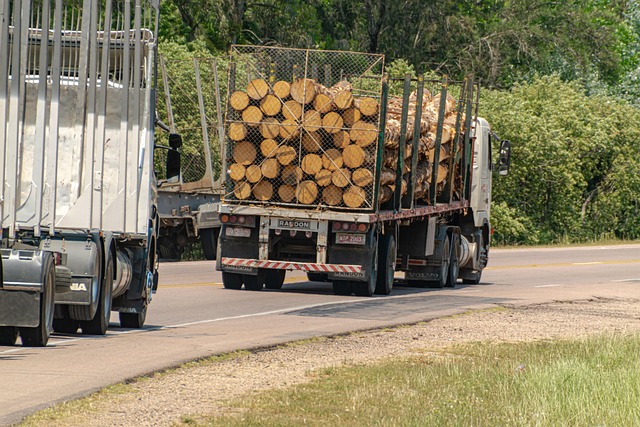Looking to register your car in California? This comprehensive guide breaks down the process step-by-step. From understanding crucial registration requirements to gathering essential documents, you’ll navigate the process smoothly. Learn how to verify your Vehicle Identification Number (VIN) for accuracy and ensure compliance with California’s DMV regulations. Get ready to hit the road legally!
- Understand California Car Registration Requirements
- Gather Necessary Documents for Car Registration
- Visit a California Department of Motor Vehicles (DMV) Office
- Complete and Submit Your Car Registration Application
- Pay the Required Registration Fees
Understand California Car Registration Requirements

Before diving into the registration process, it’s crucial to understand California’s car registration requirements. These regulations are designed to ensure road safety and maintain accurate vehicle records. The primary identifier for any vehicle is its Vehicle Identification Number (VIN). In California, a VIN verifier is essential to confirm the authenticity of the vehicle’s details during registration. This process helps prevent fraud and ensures that all vehicles on the road meet safety standards.
When registering your car in California, you may opt for a mobile VIN verifier or choose to conduct a traditional inspection at a designated location. The mobile vin verification option offers convenience by allowing the verification process to take place where you are, whether it’s at your home or workplace. This modern approach streamlines the registration experience, especially for folks with busy schedules.
Gather Necessary Documents for Car Registration

Before registering your car in California, make sure to gather all the essential documents required by the California Department of Motor Vehicles (DMV). This process is crucial for a smooth and efficient registration experience. The key document you’ll need is the Vehicle Identification Number (VIN) verification report. This can typically be obtained through a VIN inspection or by utilizing a mobile VIN verifier, which provides an easy and convenient way to ensure your vehicle’s authenticity.
Additionally, prepare other necessary paperwork such as proof of ownership, a valid driver’s license, and current insurance documents. A mobile VIN verification service can also assist in this step by offering remote inspections, making it accessible for individuals who prefer or require a more flexible approach to completing their registration formalities.
Visit a California Department of Motor Vehicles (DMV) Office

To initiate the registration process for your vehicle in California, the first step is to visit a local California Department of Motor Vehicles (DMV) office. This is where you’ll complete essential paperwork and provide necessary documents to prove ownership and identify your car’s unique Vehicle Identification Number (VIN). The DMV team will guide you through the registration procedures and ensure that all requirements are met before issuing your vehicle’s registration certificate.
While at the DMV, consider taking advantage of their mobile VIN inspection or verification services, which allow for convenient and accurate checks on a vehicle’s history and specifications. These options can streamline the registration process, especially if you’re transferring ownership or have recently purchased a used car.
Complete and Submit Your Car Registration Application

After gathering all necessary documents, it’s time to complete and submit your California car registration application. This process involves filling out Form DV304 (Vehicle Registration Application), which can be obtained from the California Department of Motor Vehicles (DMV) website or any local DMV office. Ensure that you accurately enter all vehicle information, including the Vehicle Identification Number (VIN), make, model, year, and color. The VIN is a critical piece of data used for verification purposes; consider using a mobile VIN verifier to ensure its accuracy before submitting your application.
Once completed, submit your application along with required fees and supporting documents, such as proof of insurance and identification. You can do this at a DMV field office or, in some cases, online. A mobile VIN inspection or verification service might also be beneficial to double-check the VIN’s validity before finalizing the registration process, ensuring a smoother transaction.
Pay the Required Registration Fees

To complete the registration process, you’ll need to pay the required fees, which include a vehicle registration fee and a vehicle identification number (VIN) verification charge. The California Department of Motor Vehicles (DMV) sets these fees, and they may vary depending on your vehicle’s type and age. One crucial step before registration is conducting a VIN inspection using a reliable tool like a mobile VIN verifier to ensure that the vehicle’s history is clean and free from any red flags.
This inspection helps verify important details about your car, such as its genuine ownership, accident history, and outstanding recalls. Many services offer mobile VIN inspections, allowing you to conveniently check your vehicle’s information at your preferred location. Once you’ve confirmed the vehicle’s condition, you can proceed with confidence, knowing that all the necessary steps have been taken, including the payment of registration fees, to make your car legally registered in California.
Registering your car in California is a straightforward process that involves understanding the state’s requirements, gathering essential documents, and visiting a local DMV office. By completing these steps, including verifying your vehicle’s unique VIN (a crucial step), you’ll ensure your car is legally registered and ready to hit the California roads. Remember to keep your registration up-to-date to avoid any penalties and maintain a smooth driving experience.
